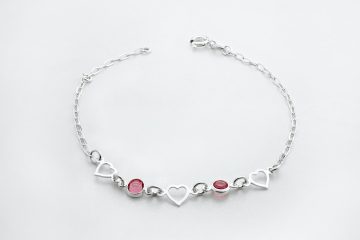Bracelets have been a significant part of human history for thousands of years, serving as adornments, symbols of status, and even protective talismans. These versatile accessories have captured the imagination of people across different cultures and civilizations, with each society bringing its unique flair to bracelet design. In this article, we will embark on a fascinating journey to uncover the earliest instances of bracelet creation, exploring the origins of this timeless accessory.
H1: The Ancient Beginnings of Bracelets
Bracelets have a rich and diverse history that spans back to ancient times. The earliest known evidence of bracelet usage dates back over 7,000 years ago to ancient Egypt and Mesopotamia. In these civilizations, bracelets were crafted from materials such as bone, wood, shells, and stones. These early bracelets were often simple in design and worn as a form of protection against evil spirits or as an amulet to bring good luck.
H2: The Role of Bracelets in Ancient Egypt
In ancient Egypt, bracelets held a significant position in both religious and social contexts. The Egyptians believed that bracelets possessed magical properties and were worn as protective talismans. Bracelets made of precious metals like gold and silver were especially valued, symbolizing wealth and social status. These intricately designed bracelets were adorned with precious gemstones and intricate engravings, reflecting the craftsmanship and artistic prowess of the ancient Egyptians.
H3: Bracelets in Mesopotamian Culture
Mesopotamia, often referred to as the cradle of civilization, also played a crucial role in the early history of bracelets. The people of Mesopotamia, present-day Iraq, created bracelets using various materials like clay, limestone, and gold. These bracelets were often engraved with intricate designs and worn by both men and women. Bracelets in Mesopotamian culture were not only ornamental but also served as a form of identification, signifying one’s social status and affiliation with a particular group.
H2: The Influence of Ancient Greece and Rome
The ancient Greeks and Romans brought their unique touch to bracelet design, incorporating a wide range of materials and styles. From delicate gold bracelets adorned with intricate filigree patterns to chunky silver cuffs embellished with gemstones, the Greeks and Romans displayed a remarkable level of craftsmanship. Bracelets in ancient Greece often featured motifs inspired by nature, such as leaves, flowers, and animals, while Roman bracelets showcased a fusion of Greek influence and their own artistic flair.
H3: Bracelets in Ancient China
Ancient China also boasts a rich history of bracelet usage, with archaeological discoveries showcasing the craftsmanship and symbolism associated with these adornments. Bracelets in ancient China were often crafted from jade, a precious stone believed to possess protective powers and bring good luck. The Chinese valued bracelets as a symbol of prosperity and happiness, and they were frequently exchanged as gifts during special occasions and ceremonies.
H2: Bracelets in Indigenous Cultures
Beyond the realms of ancient civilizations, indigenous cultures across the globe have their own unique traditions and styles of bracelet creation. From the intricate beadwork of Native American tribes to the woven patterns of African tribes, these bracelets are a testament to the cultural heritage and artistic expression of these communities. In many indigenous cultures, bracelets hold spiritual significance and are used in ceremonies and rituals.
H1: Conclusion
Bracelets have a rich and diverse history that spans across continents and cultures. From the simple bone and stone bracelets of ancient Egypt to the intricate gold and gemstone-adorned pieces of ancient Greece and Rome, these accessories have evolved over thousands of years. They have served as symbols of protection, status, and cultural identity. The creativity and craftsmanship displayed in the creation of bracelets throughout history reflect the human desire for self-expression and the importance of adornment in our lives.
FAQs:
1. What materials were used to make ancient bracelets?
Ancient bracelets were crafted from a wide range of materials, including bone, wood, shells, stones, gold, silver, clay, limestone, and jade. The choice of materials varied depending on the culture and time period.
2. Were bracelets worn by both men and women in ancient civilizations?
Yes, bracelets were worn by both men and women in ancient civilizations. However, the design, materials, and styles of bracelets often differed based on gender and societal norms.
3. Did bracelets have any symbolic meanings in ancient cultures?
Yes, bracelets held symbolic meanings in many ancient cultures. They were often worn as protective talismans, symbols of wealth and status, or as representations of cultural identity and affiliation with a particular group.
4. Are bracelets still popular today?
Absolutely! Bracelets continue to be popular accessories today. They come in countless styles, materials, and designs, catering to a wide range of personal preferences and fashion trends.
5. Can bracelets be customized or personalized?
Yes, many bracelets today can be customized or personalized to add a unique touch. From engraved initials to birthstones and charms, there are numerous options available to make a bracelet truly special and meaningful.



